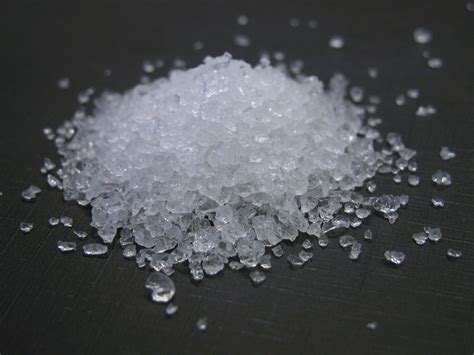**Silica: A Versatile Material with Endless Applications**
Introduction
Silica, a compound composed of silicon and oxygen, is one of the most abundant minerals found on Earth. It plays a crucial role in various industries, ranging from construction to medicine. This article will delve into the fascinating world of silica, exploring its properties, applications, and benefits.
**Properties of Silica**
Silica is renowned for its exceptional properties:
-
High strength and hardness: Silica is an extremely strong and hard material, making it ideal for use in construction, abrasives, and glass production.
-
Low thermal conductivity: Silica has poor thermal conductivity, which means it does not readily transfer heat, making it useful for insulation and heat-resistant materials.
-
Chemical inertness: Silica is chemically inert, making it resistant to corrosion and weathering.
-
Non-toxic and biocompatible: Silica is non-toxic and biocompatible, suitable for applications in medicine and drug delivery.
**Applications of Silica**
The versatility of silica has led to its widespread use in numerous industries:

-
Construction: Silica sand is used as an aggregate in concrete, asphalt, and mortar. It provides strength, durability, and resistance to wear.
-
Glass production: Silica is the primary component of glass, giving it transparency, strength, and resistance to heat.
-
Abrasives: Silica powder is used in abrasives like sandpaper and blasting media, removing rust, paint, and other surface contaminants.
-
Ceramics: Silica is an essential ingredient in ceramics, giving them strength and thermal resistance.
-
Medicine: Silica nanoparticles are used in drug delivery systems, medical imaging, and tissue engineering.
**Benefits of Silica**
In addition to its applications, silica offers several benefits:
-
Environmental friendliness: Silica is a naturally occurring mineral and is considered environmentally friendly.
-
Abundant and affordable: Silica is widely available and relatively inexpensive, making it accessible for various uses.
-
Versatile performance: Silica's unique properties make it suitable for a wide range of applications, from construction to medicine.
**Crystalline Silica: A Health Concern**
While silica is generally safe, certain forms, such as crystalline silica, pose health risks. Inhaling crystalline silica dust can cause silicosis, a progressive and incurable lung disease. Therefore, proper handling and exposure control measures are crucial when dealing with crystalline silica.

**Effective Strategies for Managing Silica Exposure**
To minimize health risks associated with crystalline silica, effective management strategies include:
- Using respirators or masks to prevent inhalation of dust
- Implementing wet suppression systems to control dust generation
- Regularly cleaning work areas to remove accumulated dust
- Providing adequate ventilation in workplaces
- Monitoring air quality to ensure safe exposure levels
**Common Mistakes to Avoid When Using Silica**
Common mistakes to avoid when using silica include:

- Failing to wear proper respiratory protection
- Not using wet suppression methods to control dust
- Ignoring proper ventilation and cleanup practices
- Overexposing workers to silica dust
- Not monitoring air quality to ensure compliance
**Why Silica Matters**
Silica plays a vital role in modern society:
- It contributes to the construction of robust and durable infrastructure.
- It enables the production of transparent and versatile glass.
- It aids in the development of medical advancements and drug delivery systems.
- It supports various industries and sectors, driving economic growth.
**Call to Action**
To fully harness the benefits of silica while minimizing risks, it is imperative to:
- Promote awareness about silica and its potential health hazards.
- Implement effective strategies to control exposure to crystalline silica.
- Educate workers and employers about safe handling practices.
- Encourage regular air quality monitoring to ensure compliance with safety regulations.
Additional Information

Table 1: Applications of Silica
| Industry |
Application |
| Construction |
Concrete, asphalt, mortar |
| Glass production |
Glassware, windows, bottles |
| Abrasives |
Sandpaper, blasting media |
| Ceramics |
Tiles, tableware, sanitary ware |
| Medicine |
Drug delivery, medical imaging, tissue engineering |
Table 2: Properties of Silica
| Property |
Value |
| Hardness |
7 on the Mohs scale |
| Thermal conductivity |
0.35 W/(m·K) |
| Chemical inertness |
Resistant to most acids and bases |
| Biocompatibility |
Non-toxic and suitable for medical applications |
Table 3: Health Risks Associated with Crystalline Silica
| Exposure Level |
Risk |
| >50 μg/m³ |
Increased risk of silicosis |
| >250 μg/m³ |
High risk of silicosis |
| >1 mg/m³ |
Significant risk of silicosis |
References:
- National Institute for Occupational Safety and Health (NIOSH): https://www.cdc.gov/niosh/topics/silica/default.html
- World Health Organization (WHO): https://www.who.int/news-room/questions-and-answers/item/silica-and-health
- American Chemical Society: https://www.acs.org/content/acs/en/careers/college-to-career/areas-of-chemistry/silica-minerals.html
